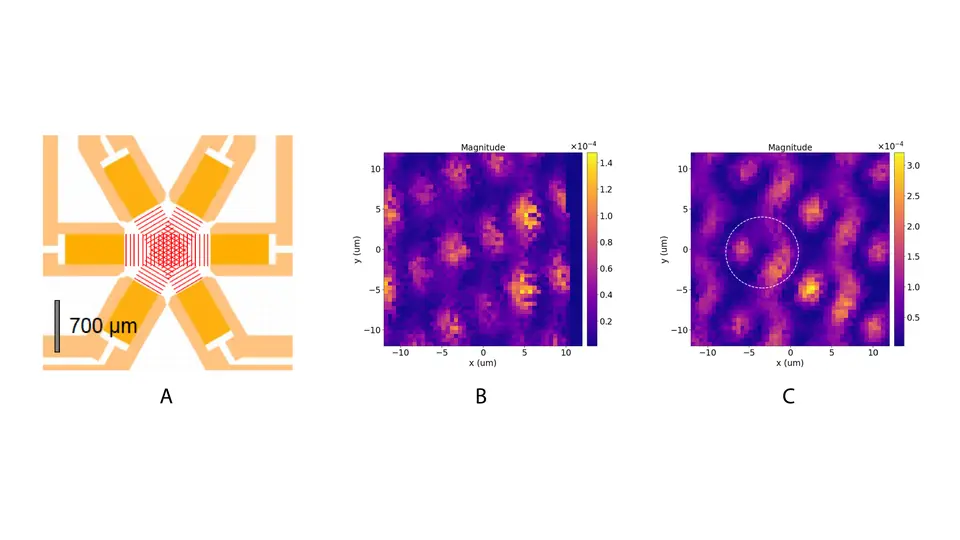Studying acoustic waves on solid surfaces or in bulk materials opens new avenues for quantum research. These waves generate dynamic nanoscale strain and electric fields as they propagate across piezoelectric materials, providing a way to control quantum states in low-dimensional semiconductors, quantum dots, and other solid-state systems. Because they can interact coherently with charge carriers, spins, or photonic excitations, acoustic waves enable key functionalities such as coupling and controlling quantum bits for computing, sensing and communication applications.
In June, colleagues from Zurich Instruments visited PDI to carry out joint experiments with our group. Together, we tested new ways of using acoustic excitations as versatile tools in quantum device research. Over two days, we explored two complementary approaches: the generation of complex surface patterns (e.g., lattices and vortices) using surface acoustic waves (SAWs), and the coupling of microwave to optical photons mediated by acoustic fields.
Generating Complex Surface Patterns
Precise spatio-temporal control of SAWs is essential for applying them in quantum technologies. In our first set of experiments, we investigated how overlapping SAWs could be used to form interference patterns and vortices on a ZnO-on-sapphire device. By exciting interdigitated transducers with controlled phase differences, we created dynamic strain fields whose swirling motion could be directly visualized using scanning laser interferometry. These acoustic vortices represent a potential means of controlling the orbital angular momentum of light emitted from the material or reflected from its surface and demonstrate how acoustic fields can be engineered with high spatial precision.
Coupling Microwaves to Optical Photons
In a second experiment, we turned to a semiconductor microcavity system designed to host exciton–polaritons—hybrid particles formed from the strong coupling of excitons and photons. Bulk acoustic waves were introduced into the microcavity, where their interaction with the optoelectronic fields modified the polariton resonance observed in photoluminescence spectra. This strain-induced broadening provides an indication of microwave-to-optical coupling mediated by acoustic fields. The results are the first demonstration of a control of polaritons with multi-element bulk acoustic transducers. In the future, bulk acoustic vortices can be generated to manipulate polariton spinor degrees of freedom, which would be considered an important step toward optical computations with light-matter particles.
Outlook
These experiments highlight the potential of acoustically controlled hybrid devices at the intersection of microwaves, mechanics, and optics. Within just two days, our teams were able to demonstrate both the generation of controlled surface patterns and the microwave-to-optical coupling with multi-element bulk acoustic transducers. Future work will focus on extending these results, for example, by using tailored pulse sequences to study the dynamics of these systems and by pursuing coherent coupling between single microwave photons and polaritons.
For more details, see the full case study published on the Zurich Instruments blog.
Image caption:
- Fig. A: Layout of the device under test with three pairs of IDTs in a circular arrangement. Acoustic standing waves are generated in the white interior area when applying microwave signals at f_0 = 610.5MHz
- Fig. B: The spatial map of the measured amplitude of the transmissive scattering parameter|S21|. Two pairs of IDTs are excited in-phase. White dashed lines indicate the positions of acoustic nodes.
- Fig. C: The spatial map of the measured amplitude of the transmissive scattering parameter |S21|. Three pairs of IDTs are excited with 120 degree phase difference between each pair. delay. This creates an array of vortices on the sample surface. A white dashed circle is added as a reference to indicate the formed vortex.
